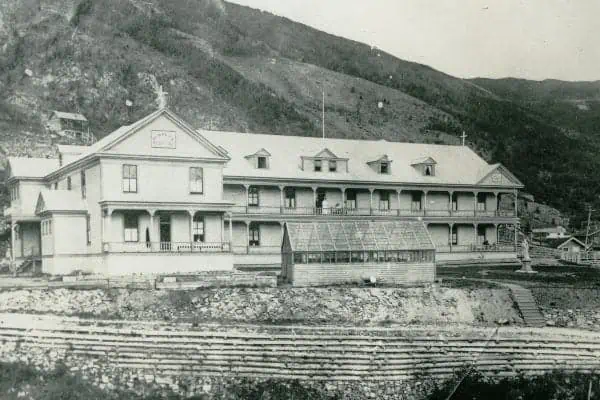At the turn of the 19th century the federal government was anxious to establish that the Yukon was a valued part of the nation.
Even though Dawson City had already begun to decline in size from its heyday as “the Paris of the North”, Thomas W. Fuller, who eventually worked on the Parliament Buildings in Ottawa, was dispatched to the Klondike in 1899 to design buildings worthy of a territorial capital city.
Six were designed and built, and five still stand. They are the Old Territorial Administration Building (OTAB), the Commissioner’s Residence, the Old Post Office, the Old Courthouse and the Old Telegraph Office.
The missing piece is the Dawson Public School, which burned in the late 1950s. Its current replacement, the Robert Service School, was designed to be sympathetic to Fuller’s vision, even to having a tower structure.
Fuller used that feature even in the smallest of his buildings, the Telegraph Office, which currently houses the executive director of the Dawson City Museum.
This is fitting, since his largest design, that of the OTAB, now houses the Dawson City Museum. At 50 years and counting since 1962, it has probably functioned as a museum for a longer period than it was continuously anything else.
It was the seat of government when it was opened in 1901, but that function ceased in 1953 when the capital was relocated to Whitehorse. It has since been home to the local post office, a radio station, the public school (when the original burned), the offices of Yukon Renewable Resources and the home of the circuit court, which sits in the former legislative chambers when it is in town.
From time to time, the legislative assembly has a special ceremonial sitting here, and it even has the original MLAs’ desks for them to sit at.
There was an earlier museum, which burned in the early 1960s. As noted by director Laura Mann during Canada Day celebrations last week, this year marks the 50th anniversary of the museum’s relocation to the OTAB.
It was in shabby shape when they moved in. The foundation needed replacing within a decade, though it took longer, and the building was really only usable in the summer, for it had no functioning heating system.
I first visited it when we brought our school here for a tour from Beaver Creek in the spring of 1978. It was impressive, but it was a chilly building that had seen better days and was in need of a facelift.
Like the town itself in those days, it seemed to be barely hanging on.
In an act that is almost unprecedented in Yukon, there was a unanimous vote in the legislature to restore the building to full use in 1986, and it was reopened in a special legislative session just a year after we moved here.
In 2001 the Historic Sites and Monuments Board of Canada decided that the building was worthy of recognition and decreed that it would receive a plaque to mark its status.
It was another nine years before the plaque actually arrived and was placed in a ceremony in June 2010.
When I first visited the museum there were mostly picture displays. These days the downstairs galleries are impressive rambles into history.
There are many artifacts on view in the visible storage gallery, an archives room, a library and the train shelter outside the main building. There are comfy chairs in the audio-visual room, where there are weekly movie nights in the dark of winter.
The museum survived an impromptu flood caused by an aging sprinkler system just this spring. Mann quipped that the flood was 50 years too late for the fire, but without the fire the museum might not be the grand institution it is today.




